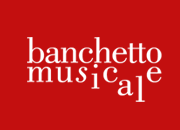October 2, Tuesday, 6 pm
Evangelical Lutheran Church, Vokieèiø g. 20
Ciconia and Dufay
The first great Franco-Flemish composers in Italy
TEKTRAKTYS Italy
- Jill Feldman soprano
- Marta Graziolino harp
- Silvia Tecardi viella
- Kees Boeke viella, recorders
Johannes Ciconia ir Guillaume Dufay share the place in history that marks the movement towards a truly “European style” of musical composition.
Johannes Ciconia was born in Liège in c.1370. He moved to Avignon, where he came into contact with the French Ars Nova and Ars Subtilior styles, and then travelled extensively in Italy. It is known that his music was played in Genova, Pisa, Firenze and Bologna in the north and as far as Assisi, Viterbo and Napoli in the south. When Ciconia returned to Liège, he brought with him a wealth of Italian musical knowledge, and one can hear the influence of Italian trecento composers, such as Jacopo da Bologna, in his two part compositions such as La fiamma del tuo amor and Merce o morte. However, Ciconia also found a style that was distinctly his own, as in the masterpiece Una panthera, written in praise of the city of Lucca. Ciconia died in Padua in 1412.
Guillaume Dufay was probably born somewhere near Cambrai in
northern France in c.1400, and died there in 1474. He certainly heard the music of his French and Flemish
predecessors, and grew to become a composer of international renown, holding positions in many musical
centres in Europe. Dufay maintained a close association with the d’Este family, some of the most important
musical patrons of the Renaissance, whom he probably met when working for the Malatesta family in Pesaro.
It was for Niccolò III (D’Este), the Marquis of Ferrara, that he wrote the grandiose C’est bien
raison. Dufay’s compositions are based on formes fixes, and rondeaux in particular with
its ABaAabAB form. He also used the virelai form, ABbaA, heard in this program in Hélas mon deuil
and an instrumental version of Hélas madame, performed in this way due to two verses of missing
text. Quel fronte signorile was written during Dufay’s stay in Rome, and is the only work of his in
the Italian language in the programme.
Dufay was among the most influential composers of the 15th century, and his music was copied, distributed
and performed everywhere that polyphony had taken root. Almost all composers of the succeeding generations
absorbed some elements of his style. The wide distribution of his music is all the more impressive considering
that he died several decades before the availability of music printing.
The Tetraktys ensemble was founded by Kees Boeke in 2000 and was named after the symbol of the Pythagoreans, the philosophic (and musical) school linked with the name of the almost mythological figure of Pythagoras of Samos. The group has released several CD recordings, including “Trecento”, as a duo of Jill Feldman (soprano) and Kees Boeke (flute and viella), and “Dufay Chansons”, featuring a quartet with additional harp and viella. In 2005, the ensemble released a CD of ballatas from the Squarcialupi Codex, by a relatively unknown composer, Andrea da Firenze. In 2006, works from the Chantilly Manuscript were recorded by Silvia Tecardi (viella), Marta Graziolino (harp) and Carlos Mena (alto). Tetraktys has performed at many European music festivals, including Bruges, Antwerp, Utrecht, Amsterdam, Maastricht, Turin, Florence, Modena, Paris, Zurich, Algarve and Las Palmas. In 2006, they made a successful concert tour of Japan.

